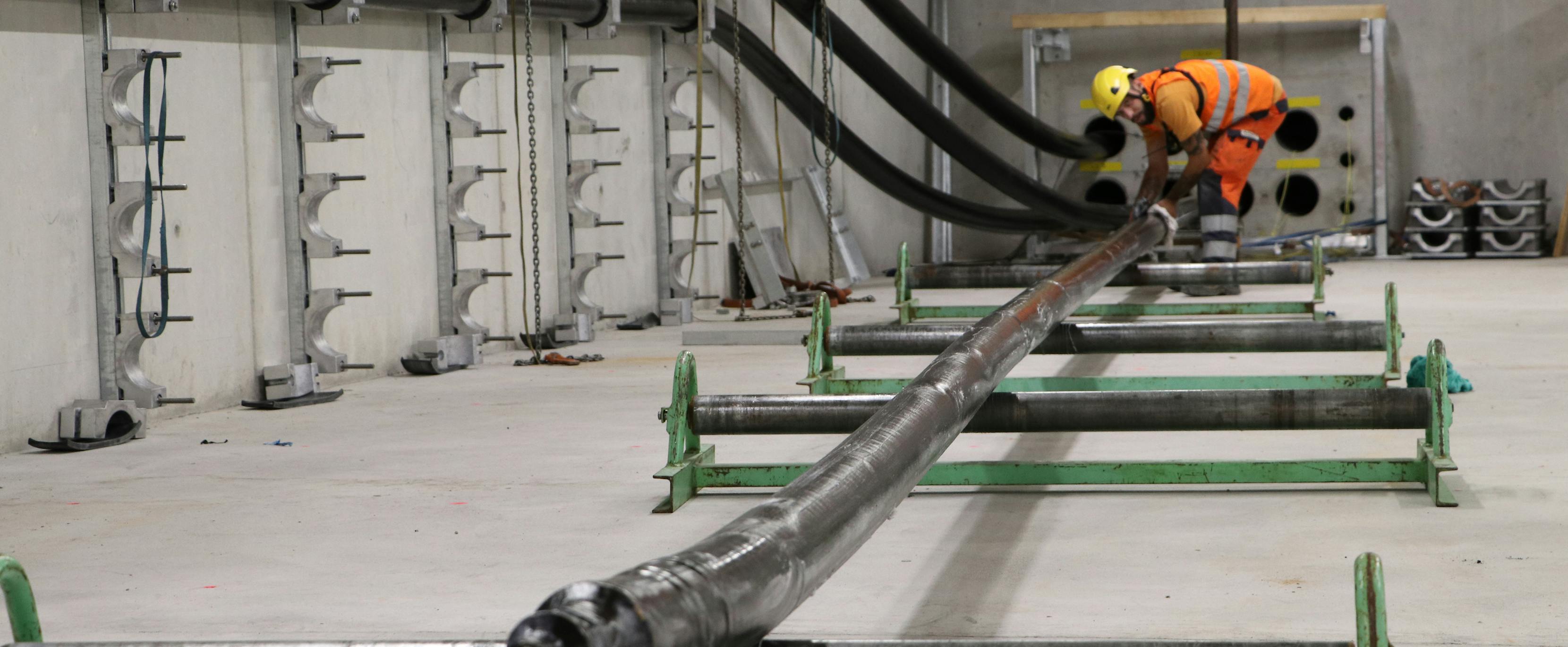Grid project Beznau – Birr

The commissioning of a new extra-high-voltage line does not happen every day. And the commissioning of the new 380 kV line between Beznau (AG) and Mettlen (LU) on 19 May was even more exceptional: a 1.3 kilometre section of the line in the area of the Aargau municipalities of Bözberg and Villnachern runs underground. It is the first time that Swissgrid has laid a section of an extra-high-voltage line underground. The line was even put into operation a year earlier than planned.
The commissioning of the new line meant the old one could be dismantled. This will provide relief for the inhabitants of Neu-Riniken and Hafen in particular, as part of the old line ran straight over the residential area.
Interview: Sandro Dinser, Swissgrid
As Head of Engineering Lines at Swissgrid, Sandro Dinser is an expert in the field of line technologies. He provided intensive support for the partial underground cabling project in Bözberg.
With the Beznau – Birr section, another part of the Beznau – Mettlen power line has been completed. Part of this section runs underground. What were the biggest challenges during the construction of the underground cabling?
Sandro Dinser: What made this project so special was simply the fact Bözberg was the first time that Swissgrid was laying a 1.3-kilometre-long section of a 380 kV line underground. Transition structures had to be constructed to connect the underground cable with the overhead line sections. These are approximately the size of an ice hockey rink; the tension ring sets are 25 metres high. It was important to us to incorporate them into the landscape as well as possible.
The conduit blocks are impressive in size. Around 55,000 m3 of earth had to be excavated and taken away in lorries for their construction. For comparison, this equates to the volume of water in around 20 swimming pools, each 50 metres in length. Around 6,000 lorry trips were required during the construction period. Installing the underground cable into the cable conduits was a logistical challenge. Together with the cable reel, each of the twelve cables weighs around 40 tonnes. The cables were brought from Brugg to the northern transition structure by heavy load transporter in twelve trips. Once there, the cables were unrolled and threaded into the conduit blocks. Using steel cables and tractors, they were then pulled through the 1.3 kilometre cable conduits to the southern transition structure. 12 cables were laid. One cable weighs 21 kg per metre. The total weight of all the cables installed is around 380 tonnes.
Nevertheless, it was possible to put the line into operation a year earlier than planned. How did that come about?
Firstly, we owe that to the excellent work of all those involved in the project. The project and execution planning were very good, which had a positive impact on construction progress. The civil engineering and installation teams did an excellent job. The weather also helped. It was relatively dry and warm, especially in winter 18/19, when the cable trenches were excavated and the conduit block was concreted. We made much faster progress than planned. However, COVID-19 almost thwarted our plans.
In what way?
At the beginning of the COVID-19 outbreak, it was not clear how the installation work on the overhead line could continue. The «safety first!» principle applies at Swissgrid. That is why we had to make sure the installation team could enter the site at all and continue working in strict compliance with all safety regulations and hygiene rules. Fortunately, we managed that. The commissioning of the new line was possible only in a specific time window between mid-April and mid-May. This time window has been coordinated with the big power plants. If the new line had not been ready during this time window, we would have had to wait a year for the next shut-down window.
The line is now in operation. What happens now?
Swissgrid intends to use this partial cabling to gain important knowledge about the operation of underground cabling. Underground cables have different physical properties than overhead lines. For this reason, the project is scientifically supported in cooperation with authorities and specialist organisations, such as the Swiss Federal Office of the Environment. Swissgrid has positioned three measuring stations along the underground cable route. Investigations will include the temperature behaviour of the underground cable conductors depending on the electricity load, the temperature profile in the soil above the conduit block and in the wider area, the biodiversity in the ground and the electromagnetic fields.
Will any signs of the underground cable be visible during operation?
During the operation phase, nothing on the surface will indicate the course of the underground cable. The ground above the cable conduit block can be used again for agriculture and vegetation. As roots could damage the underground cable, however, the route must be kept clear of tall or deep-rooted trees. In periods of drought, the course of the cable conduit block may become visible, as the soil above the conduit blocks dries out more quickly than the surrounding soil.






